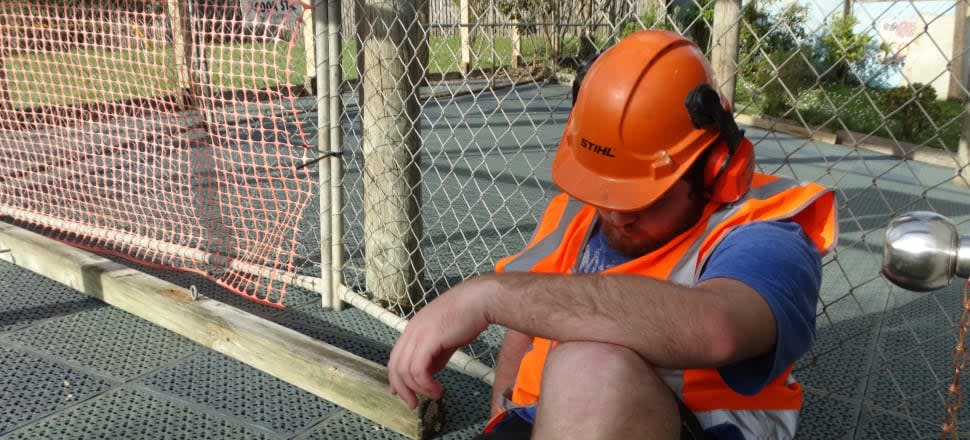
Slogging through Covid and struggling with debt - building companies on the edge are going under at increasing rates, and many of them being put into insolvency by the tax department.
Building and construction companies are now being liquidated at twice the rate of food and hospitality industries - and it's small businesses suffering the stress.
In January and February, according to Waterstone Insolvency, construction company failures ran at 29 percent of all liquidations, compared to 14 percent for hospitality, and that ratio is expected to grow in the coming months.
The Herald's property editor Anne Gibson has been documenting the liquidations and she talks to The Detail about what's behind them.
"They're suffering the most because they're the ones on the knife edge," she says.
"They're the ones that were struggling anyway, and often pre-Covid.
"It's a really bad time for the sector when you have a boom. One of the leading builders once said to me this is the most dangerous time. Because the prices are changing so fast, there's a whole lot of pressure, we've still got so much of an overlap from Covid ... there's high inflation in the economy and building sector inflation will be running at probably almost double national inflation, we've got that labour shortage ... and a very lumpy sector that tends to go boom/bust every few years."
Most of these companies are being put into insolvency by the tax department chasing what's owed.
"They're after any assets that they can get hold of to pay the outstanding tax bill. The tax will be GST that hasn't been paid ... but also PAYE and unfortunately - and a lot of employees are getting caught up in this - outstanding holiday pay.
"The really sad thing is a lot of employees won't get the money that they're owed."
Gibson says this is not about simply working with IRD to pay late taxes - these companies have other creditors as well. Often they're chasing the next job to pay tax and expenses from the last one, and that's very risky.
"They just can't carry on, and they have to declare at a certain point in time that the liabilities outweigh the assets. The bills are mounting and IRD wants their money."
A high number of houses continue to be built - even with a 3 percent drop from its peak, there are still nearly 50,000 new housing consents being issued a year - but smaller companies are finding that after struggling through the pandemic they just can't keep going.
Building Industry Federation chief executive Julien Leys says the industry is softening, but it's not falling off a cliff - there have been developments lately that would indicate this is a bump in the road rather than a downward plunge.
One of those is that for the first time in a long time, the price of materials - which soared during the boom as the pandemic put the brakes on supply - is coming down.
"That demand that we had is levelling off. We've got a lot of inventory in terms of building supplies around the country. The demand's not there and the prices are starting to level back."
At the same time international freight prices are dropping - some as much as 70 percent.
There is another factor that could keep some of those small firms on the edge going at least for a while - the after effects of Auckland's storms, and more widely, Cyclone Gabrielle.
"What might happen is people might have to move," says Gibson. "Obviously that Hawkes Bay/Tairawhiti area needs so much done there, as those insurance claims come through I would expect to see some relocation in the work force. But there is still a tremendous amount of work on."
Both Gibson and Leys agree however that in the notorious boom and bust cycle of the industry, we are on the downhill slope - although it might be less of a plummet that we've seen in past dips.
Hear more about the reasons behind an upswing in industry liquidations in the full podcast episode.
You can find out how to listen to and follow The Detail here.
You can also stay up-to-date by liking us on Facebook or following us on Twitter.








